Forest EssayOxford dictionary defines a forest as a large area covered with thick trees and plants. The definition of forests is defined based on land use, tree density, ecological function, and legal standing. According to United Nations Food and Agriculture Organisation: Land covering more than 0.5 hectares with trees higher than 5 meters and a canopy covering more than 10% of trees can reach these thresholds in situ. It should not include an area that is under urban use or agricultural. 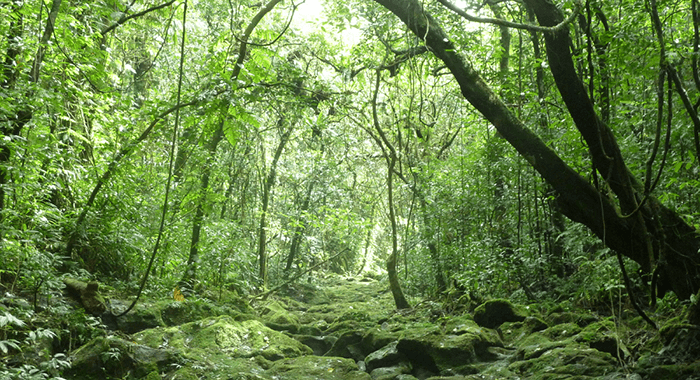
Global Forest Resources Assessment used this definition to assess the forest cover in the world. They found that 4.06 billion hectares of area are under forest, i.e. 31% of the world's land. It is a dominant terrestrial ecosystem that is present throughout the world. More than 50% of forested area is presented in the Russian Federation, Brazil, China, the United States of America, and Canada. The maximum share is in tropical and boreal, temperate, and subtropic domains. Classification of Forest EcosystemBroadly, the Forest ecosystem is divided into three major types: Tropical Forest Ecosystem, Temperate Forest System, and Boreal System. 1. Tropical Forest SystemThis forest is called a Tropical Rainforest, and it has been named rainforest because it receives 100 inches of rain annually. Under tropical forest cover, a wide range of species thrives compared to other forest ecosystems. This forest type can be located at 23.5 degrees North and 23.5 degrees south. The temperature hovers around 68 degrees and 77 degrees Fahrenheit. Massive rainfall has resulted in the bad quality of soil, eroded soil, and taken key minerals from the soil. Due to massive rainfall, the leaching of soil is visible. Broad-leafed trees dominate the tropical forest, and the height of trees could be 82-115 feet. The sunlight is not able to reach the ground floor due to the dense canopy. The tropical forest houses a wide range of species like amphibians, reptiles, mammals, and birds. Tropical Forest is also classified into various parts:
2. Temperate Forest EcosystemsTemperate forests are mostly seen in Eurasia, North America, Japan, etc. This kind of forest receives less rainfall (30-60 inches) than Tropical Rainfall Forests. Temperate Forests witness all four seasons with temperature variations. The temperature in the winter goes below the freezing point, and in summers, the mercury roars up with high humidity. The soil here is rich in organic content and supports a massive amount of greenery and thick vegetation. It is a natural home to black bears, deer, raccoons, coyotes, and birds like warblers, woodpeckers, owls, hawks, etc. Like Tropical Evergreen Forest, it is also categorized in two ways: Temperate Deciduous Forest and Temperate Coniferous Forest. 1. Temperate Deciduous Forest: It witnesses four specific seasons and gets rainfall of around 30-60 inches. In the winter, its sees snowfall. The soil's fertility is immense, resulting in deep vegetation like ferns, mosses, oak maple, and birch. Animal species like cardinals, woodpeckers, and red foxes are found in this forest. 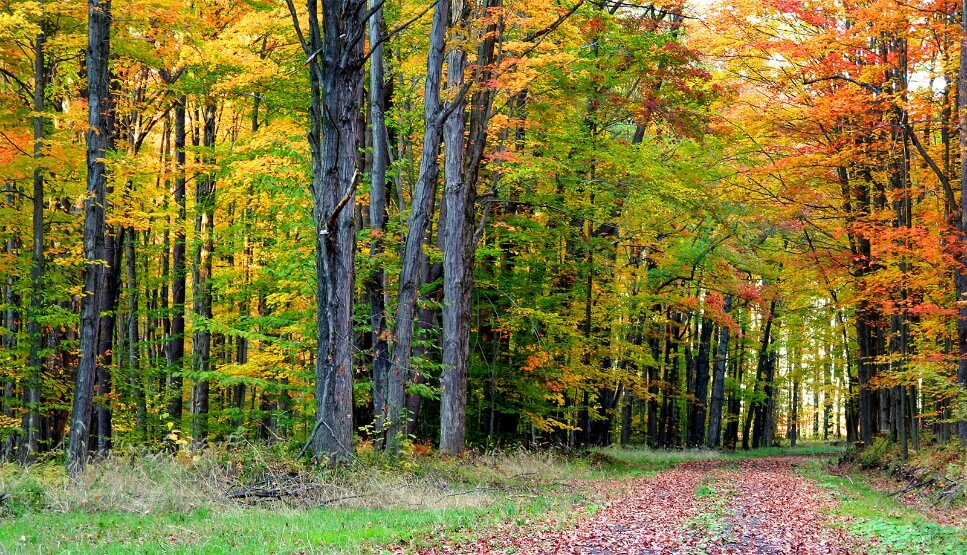
2. Temperate Coniferous Forests: This type of forest ecosystem is usually seen around coastal areas. It gets massive rainfall (50-200 inches), and the area is covered with a thick amount of decomposed matter. The plant species are maple, cedar, redwood, mosses, ferns, etc. The animal species common to this region are spotted owls, elk, marbled murrelet, and deer. 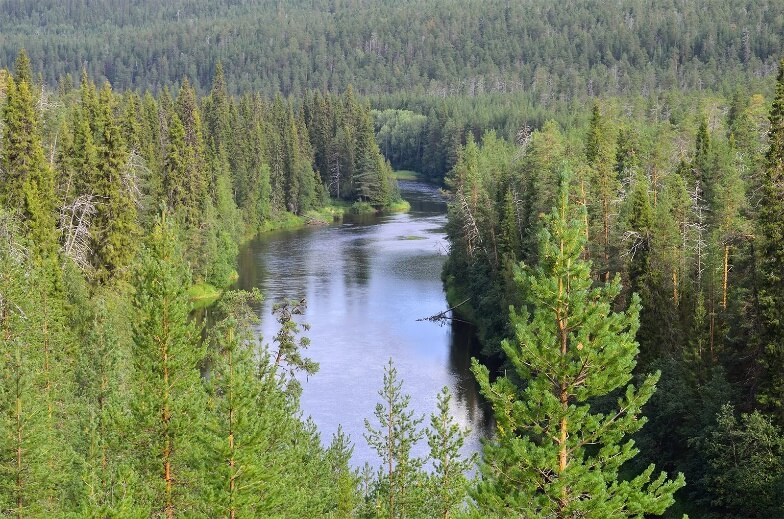
3. Boreal Forest SystemSometimes it is also called Taiga Forests and is common in Scandinavia, Northern Asia, Canada, and Siberia. The striking feature of this forest is it observes short summer and long winter, and precipitation happens in the form of snowfall. Some of the most common trees present in the forests are spruce, pine, and fir. The trees are evergreen, have a green canopy, and do not permit the sunlight to reach the surface of the Earth. 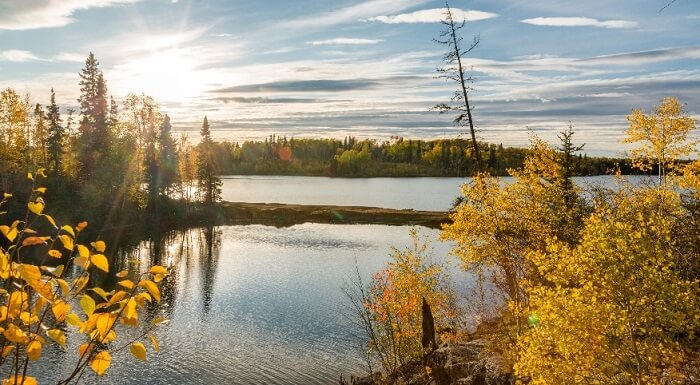
Common Features of the ForestsThe forest possesses unique and interesting features. Some of the features are listed below:
Structural Characteristics of the Forest Ecosystem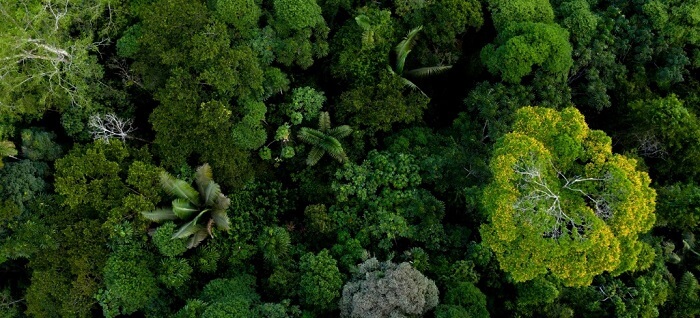
Components of the Forest Ecosystem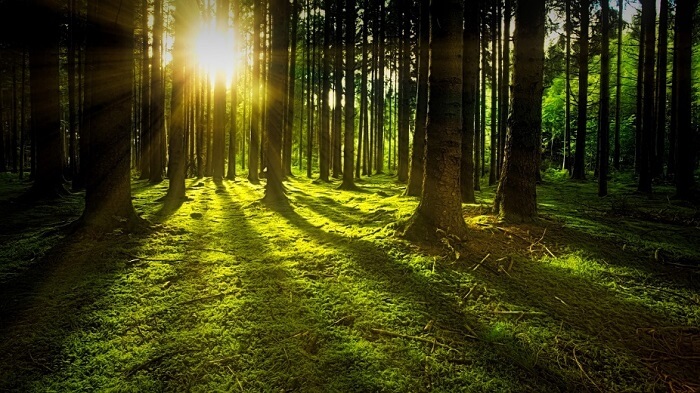
Various components of the forest present play a crucial role in the functioning of the forests. Some of the components are:
Relevance of Forest in the EcosystemForests help in regulating the oxygen and temperature level of the atmosphere. Forest balances the oxygen atmosphere of the Earth. During the process of photosynthesis, plants inhale carbon dioxide and exhale oxygen. The plant release excess water in the form of water vapour, and this process is called transpiration. The water vapour rises from lakes, oceans and rivers, and rivers condense into clouds. Then it precipitates on the Earth. All these activities form an integral part of the water cycle. Forest has a significant role in lowering global warming levels of the Earth. Trees tend to hold the soil with their roots, thus helping prevent soil erosion. Forest CoverThe forest cover is not just limited to planting trees and improving the degraded forest land. Trees are being cut down at a massive scale to meet human needs. The Government and environmentalists should intervene immediately and slow down this activity. Forest fires are one of the major reasons that have resulted in the loss of trees on a huge scale. Combined with afforestation and reforestation must be put into practice. The people and Government must come together to save those trees that are present on the Earth. Union Government of India came up with a survey in which it says that there are an increase of 2,261 square kilometres of tree cover and forest and Madhya Pradesh bags the first position in terms of forest cover and the state which has seen a huge increase in the forest cover is Andhra Pradesh (647 Square Kilometer), Telangana falls second in line and follows by Odisha. The share of Mangrove forests has also increased by 17 square kilometres, and the States which is topping the lists are Odisha, Maharashtra and Karnataka. The present National Forest Policy of India aims to achieve 33% of the geographical area under forest and tree cover. ForestryForestry refers to the management of forests, and the management of forests has often evolved from time to time; nowadays, the term has been modified called Sustainable Forest Management. Those Foresters involved in this stress more on integrating economic, social and ecological values in coordination with local tribes and communities and relevant stakeholders. Forest in WorldAmazon Forest covers Guyana, French Guiana, Bolivia, Brazil, Colombia, Ecuador, Venezuela and Suriname. This forest covers an area of 5,500,000 square kilometres. Congo Rainforest is spread over the Republic of the Congo, Equatorial Guinea, Gabon, Central African Countries, Angola, Cameroon, and the Democratic Republic of Congo. It covers 2,000,000 square kilometres of land. Frequently Asked Questions on ForestsQues: How do you define Forests? Ans: A forest is "A large area covered with trees. Ques: What are the different types of forest present in India? Ans: Forests present in India can be classified into five major factors:
Ques: What are the common trees of India? Ans: Some of the common trees of India are:
Ques: Name some of the National Parks present in India. Ans: State: Assam
State: Andhra Pradesh
Union Territory: Andaman and Nicobar Island
State: Arunachal Pradesh
State: Goa
State: Haryana
State: Jharkhand
State: Kerala
State: Madhya Pradesh
Ques: What are the utilities of the tree? Ans: Some of the utilities of the tree are:
Ques: What is Van Mahotsava, and when is it celebrated? Ans: Van Mahotsav means "Tree Festival," which is celebrated for a week and begins on 1ST July and culminates on the 7th of July. Ques: What is the purpose of celebrating Van Mahotsav? Ans: The function aims to inspire the masses to plant trees and forest conservation. Ques: When was Van Mahotsav started, and by whom? Ans: Former Union Minister for Agriculture and Food started this program in 1950. Ques: What is a forest fire? What are the essential elements involved in it? Ans: Forest Fire is an uncontrolled fire on land covered partly or wholly by timber, grain, grass, brush, or other flammable vegetation. Essential elements involved in it are:
Ques: What are the different types of Forest Fires? Ans: Different types of forest fires are:
Ques: Enlist the causes of forest fires Ans: Some of the known causes of forest fires are:
Ques: What are the consequences of forest fires? Ans: Consequences of the forest fire are:
Ques: What mitigation measures have been adopted by the Government of India for Forest Fires? Ans: The nodal ministry, i.e., the Ministry of Environment, Forests and Climate Change, has come out with a National Master Plan for Forest Fire Control. The Forest Survey of India is responsible for overlooking the incident of wildfires. The plan aims to give a well-coordinated and integrated fire-management program, and some key components are:
Ques: Which state has the largest forest cover in India? Ans: Madhya Pradesh ranks number one in forest cover and is followed by Arunachal Pradesh, Chhattisgarh, Odisha, and Maharashtra. Ques: What are the major reasons for Deforestation? Ans: Some of the notable reasons for Deforestation are:
Next TopicEssay on Swami Vivekananda
|
 For Videos Join Our Youtube Channel: Join Now
For Videos Join Our Youtube Channel: Join Now
Feedback
- Send your Feedback to [email protected]
Help Others, Please Share









